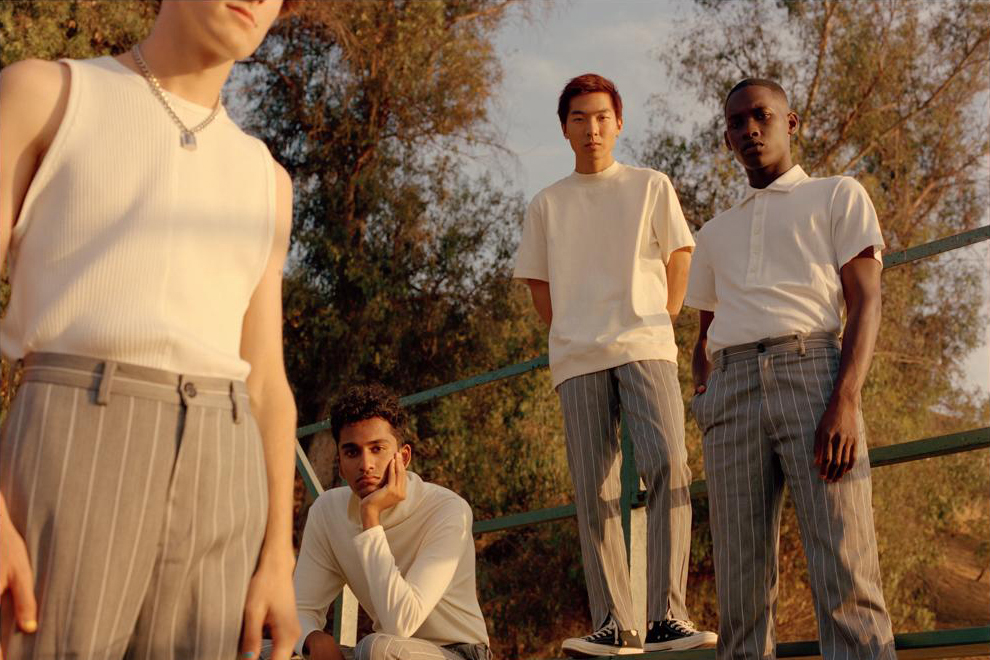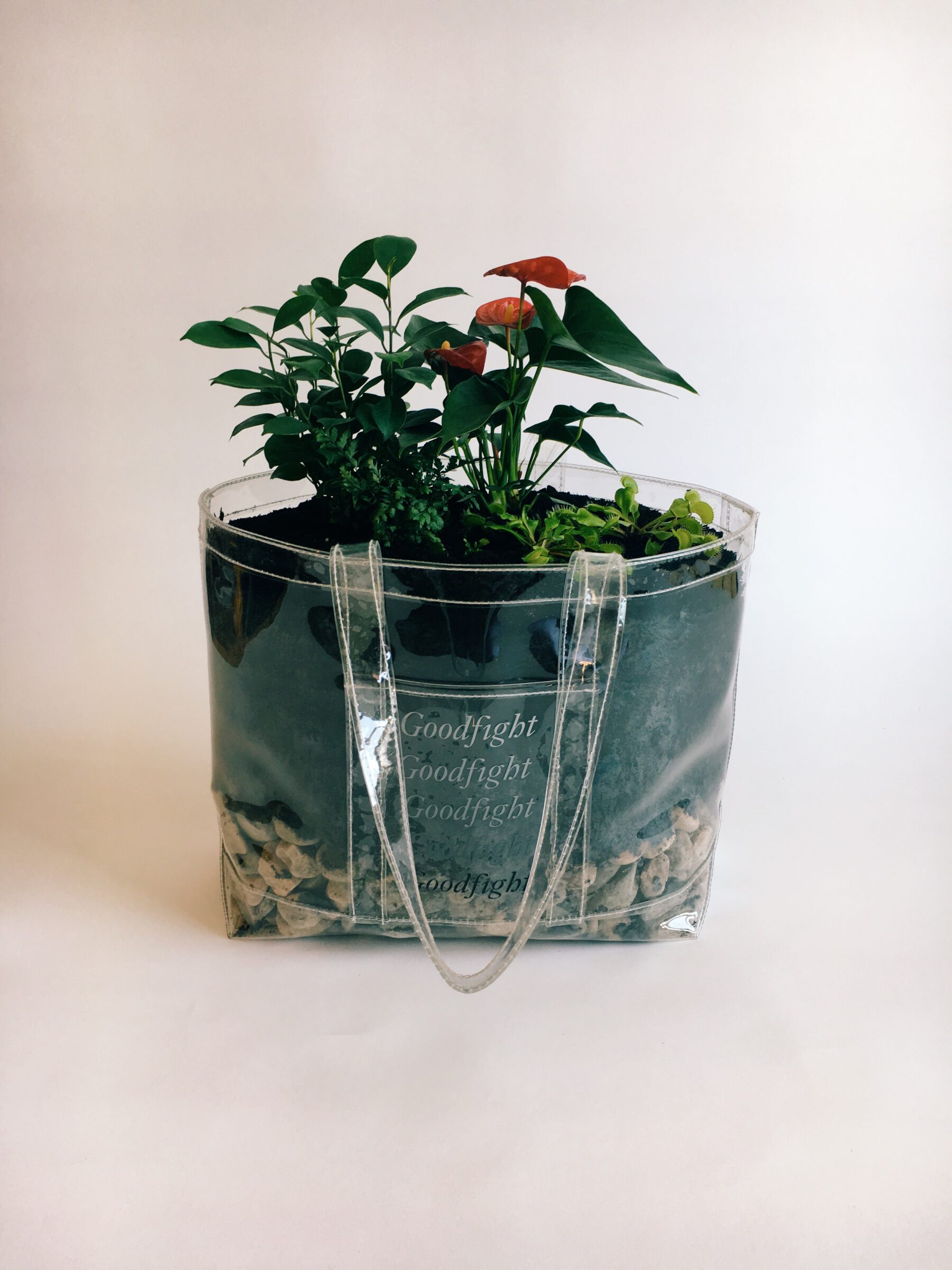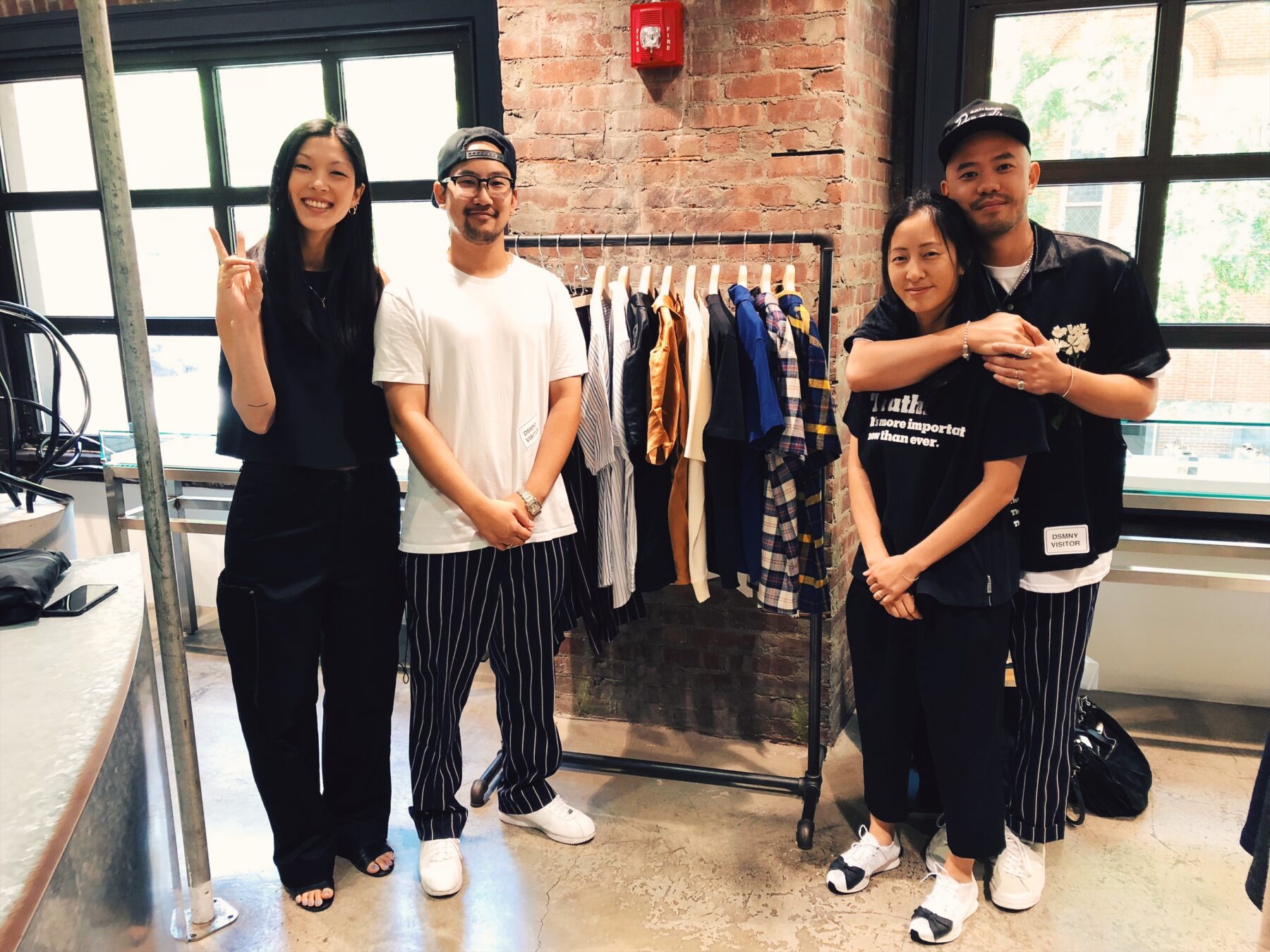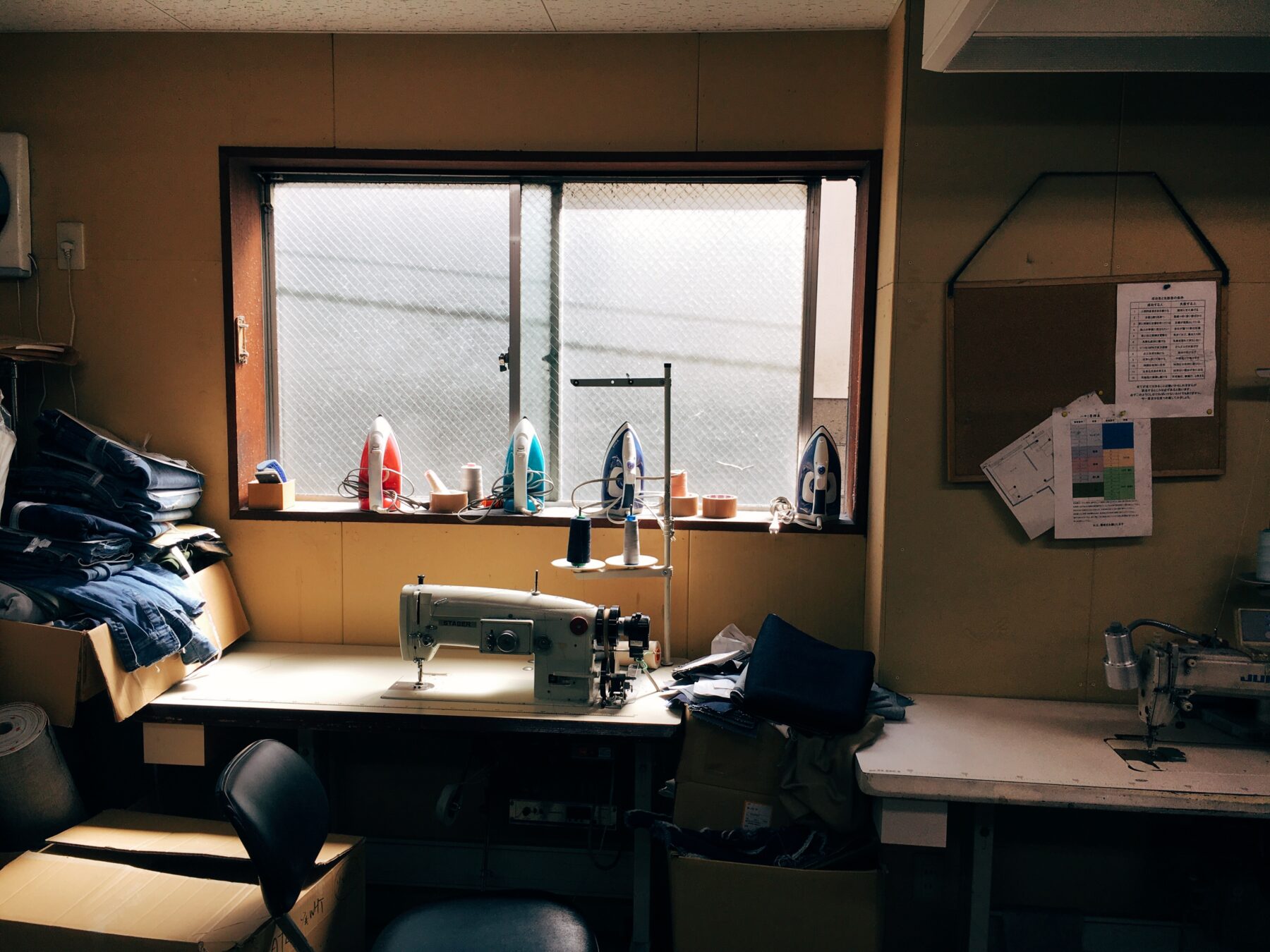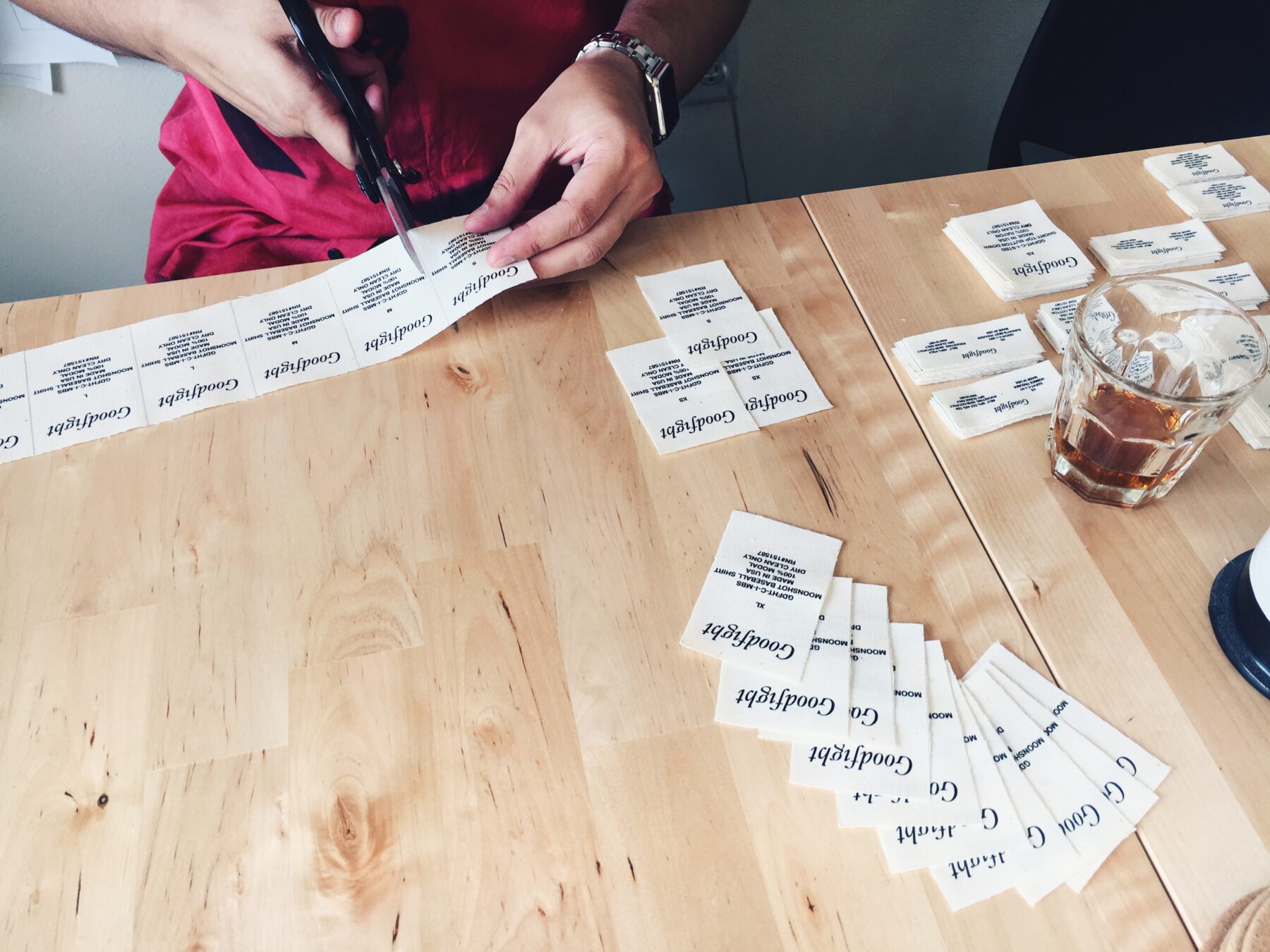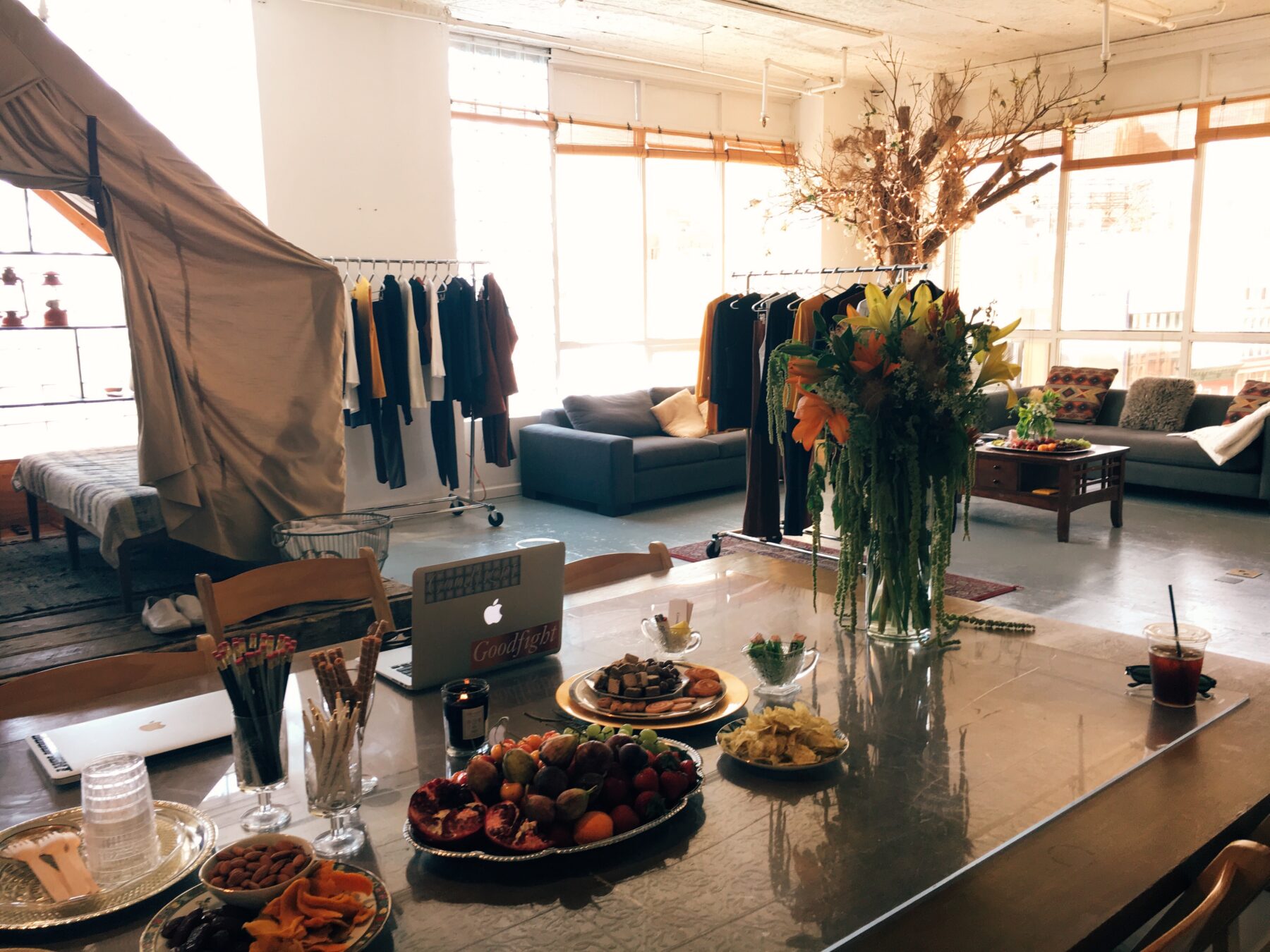Upending cultural norms with menswear label Goodfight
Whether they’re exploring the international phenomenon of ‘chefs on a break’ or fusing together narratives from their respective heritages, L.A.-based fashion label Goodfight develop intricate stories and concepts to feed into their collections.
During the twelve years he’s spent working in fashion, Caleb Lin has made various attempts to escape the industry. The most notable was when he went to work as an assistant to Creative Director Drew Fitzgerald, who, among his work with various companies and entertainment clients, is one of the co-founders of JUST with Will and Jaden Smith. “But I kept getting pulled back,” says Lin. “Drew kept putting me on fashion jobs because of my background.” So when it came to starting a creative venture with his wife Christina Chou, it was only natural that he would revert to the industry where most of his experience lay. “We weren’t necessarily planning on starting a fashion brand,” Lin confesses. “We knew that we wanted to do something together with our friends, and we realized that for three out of four of us, our primary experience was in fashion. We thought: I guess we know how to make clothes so let’s try to do that, but with a narrative that we really believe in.”
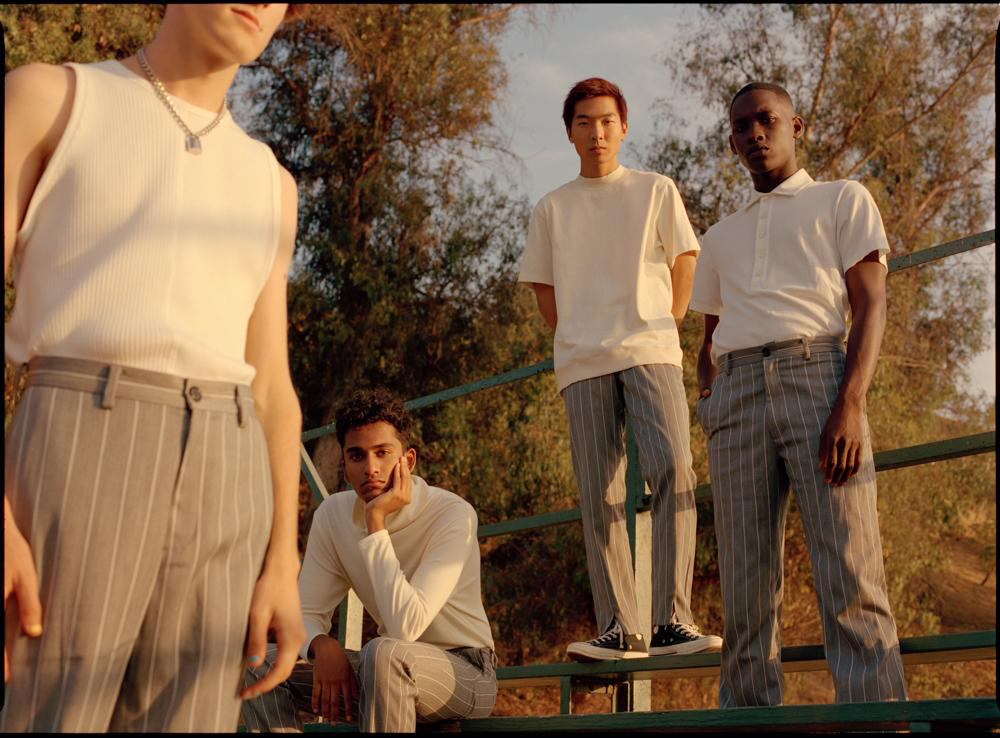
Goodfight released their first collection in spring 2018 and have already achieved things that they thought would only be possible after operating for many years, such as selling their garments through multi-brand retailer Dover Street Market. This success may be attributed to Goodfight’s clear and unique vision for their brand and target market. “We’re aiming our clothes at people who are interested in strange but beautiful things,” says Chou. “We’d like to introduce an appreciation for the sort of cultures and narratives that we’re bringing in to our clothing.”
All of the founders of Goodfight identify as Asian-American: Chou’s father is Indian, and her mother is from Taiwan, Lin’s parents are both Taiwanese, as are those of Creative Director Julia Chu, and designer Calvin Nguyen was raised in New Orleans by parents who had immigrated to the U.S. from Vietnam in the aftermath of the Vietnam War. They seek to channel their diverse backgrounds into their collections. One of the inspirations for this merging of cultural references was the late American chef, author, and travel documentarian, Anthony Bourdain, who is best known for introducing people to previously underrepresented international cuisines through his writing and television work. “He didn’t just present new worlds, he built bridges,” states Lin. “That’s what was so special about Anthony, and that’s what we hope our brand can do.”
“The process is most of the time more important than the product.”
The inspiration to start the brand also came from a motivation to effect positive change within the workplace. “We were very keen to try and create an organisation that did things excellently. We wanted to do things right, to pay people fair wages and have a culture of taking care of each other,” says Chou. This compassionate ethos extends to how they select the factories they collaborate with. “We just felt like the culture right now, especially here in the U.S. says that it doesn’t matter how you win as long as you win,” adds Lin. “That’s not something we believe. The process is most of the time more important than the product, and if the process is handled correctly, then the product’s going to be incredible.”
Below, Lin and Chou discuss the multi-layered and multicultural narratives they feed into their fashion brand, how they’ve explored subverting gender norms in fashion, and what it means for them to be a brand based in today’s America.
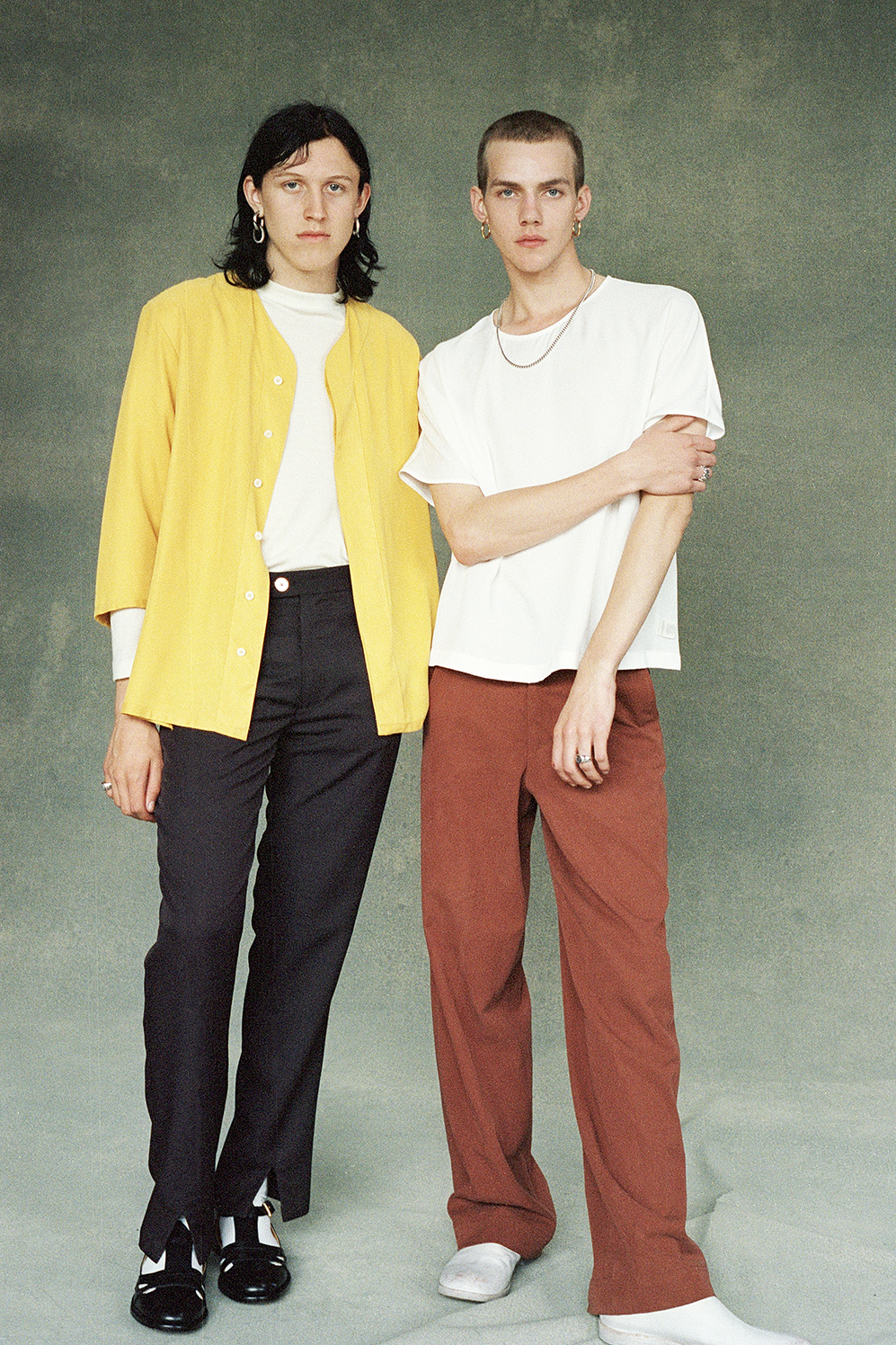
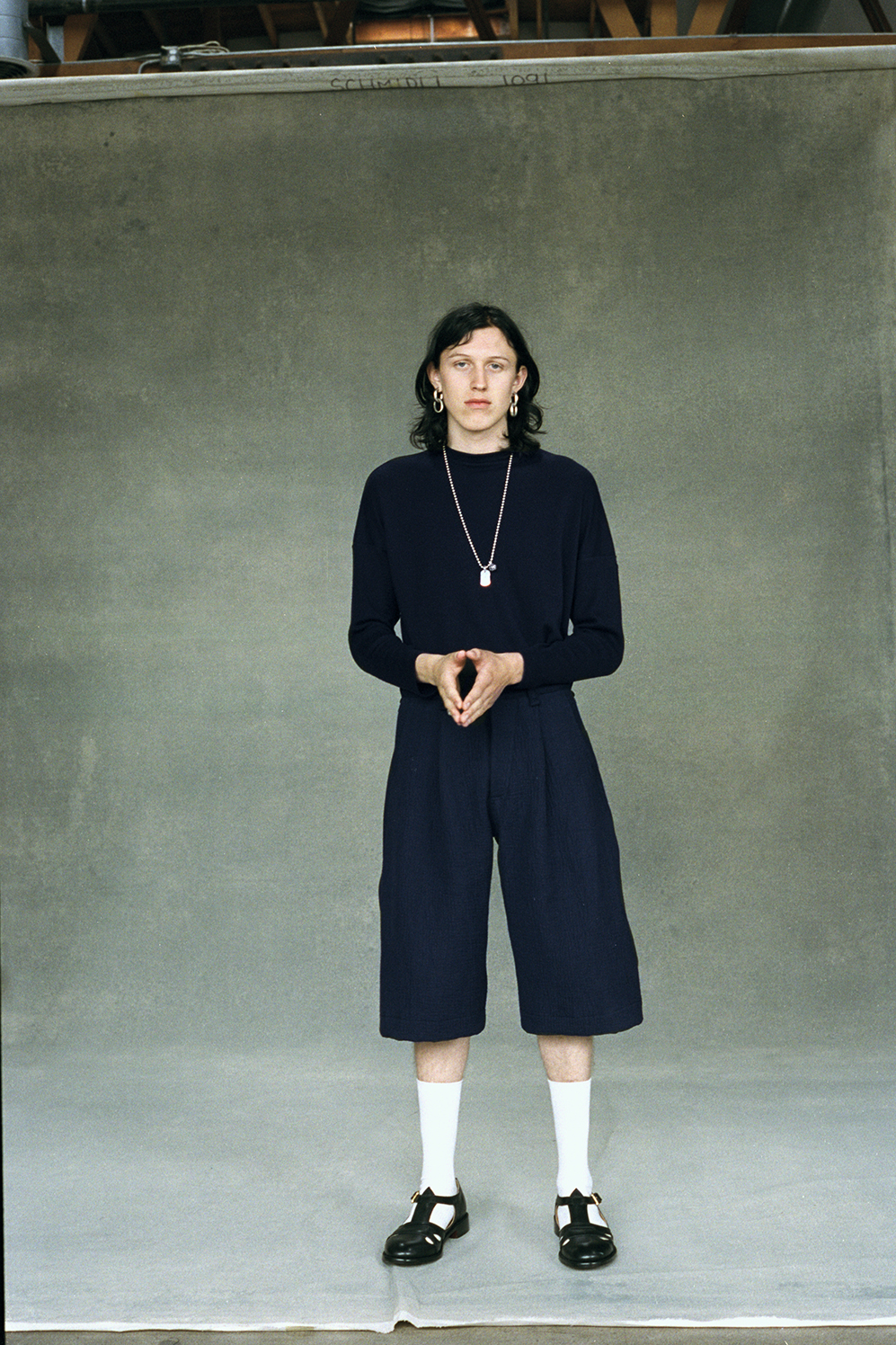
-
The first collection you created was for Spring/Summer 2018, and you claim it aims to challenge perceptions of masculinity and gender. Does this mean you were looking to feed into the wider conversation at the moment about unisex and gender fluid fashion?
CL: We don’t really market ourselves as a unisex brand; we’re a menswear brand. We realized that men and women sometimes like to wear the same kind of things so we stock all our clothes all the way down to an extra small to allow women to wear our products too. But it often happens that you have girls wearing things that were made for men. It wasn’t the whole driving force behind the collection, but we wanted to kind of do the reverse, and for guys to wear things that were conventionally perceived as made for girls, to show them that it wouldn’t make them feel femininine, uncomfortable, or weak, but that it could actually be something empowering and something beautiful.
-
How did you go about making a menswear collection feel feminine?
CL: Our creative director Julia Chu is a woman, and our designer Calvin Nguyen’s background is womenswear as well, so we wanted to design from a different perspective. We used a lot of stereotypically feminine fabrics such as tencel, rayons, and fabrics that are made for drape—the mill that we sourced most of them from typically supplies womenswear brands. Some people really loved it and then actually we had some press and buyers that said the collection reminded them of their mother’s clothing. I don’t know if that’s a good or a bad thing!
-
Does your interest in subverting gender norms also extend to the models you pick to bring your garments to life?
CL: We try not to conform to conventional perceptions of beauty. The male model on the cover of our first lookbook has a very androgynous aesthetic. He’s beautiful, but he’s also very masculine and strong at the same time.
-
But gender isn’t always your main focus when designing, right? All of your clothes also seem to have very strong themes…
CL: Usually it starts with music. A lot of the time our designer starts listening to different types of music and puts together a playlist. I think Spring/Summer 2019 [the collection that’s currently in stores] is a great example. He was in Paris when he first started researching, was listening to a lot of jazz and became interested in this funny intersection of time when jazz was turning into rock ’n’ roll, and when these two worlds were colliding. This was very special for him having grown up in New Orleans, because that was the birthplace of the likes of Fats Domino and Louis Armstrong, which was where they came into contact with people like Elvis. From those initial inspirations, our season came to be called King Cake Baby & the Ivy League Dream.
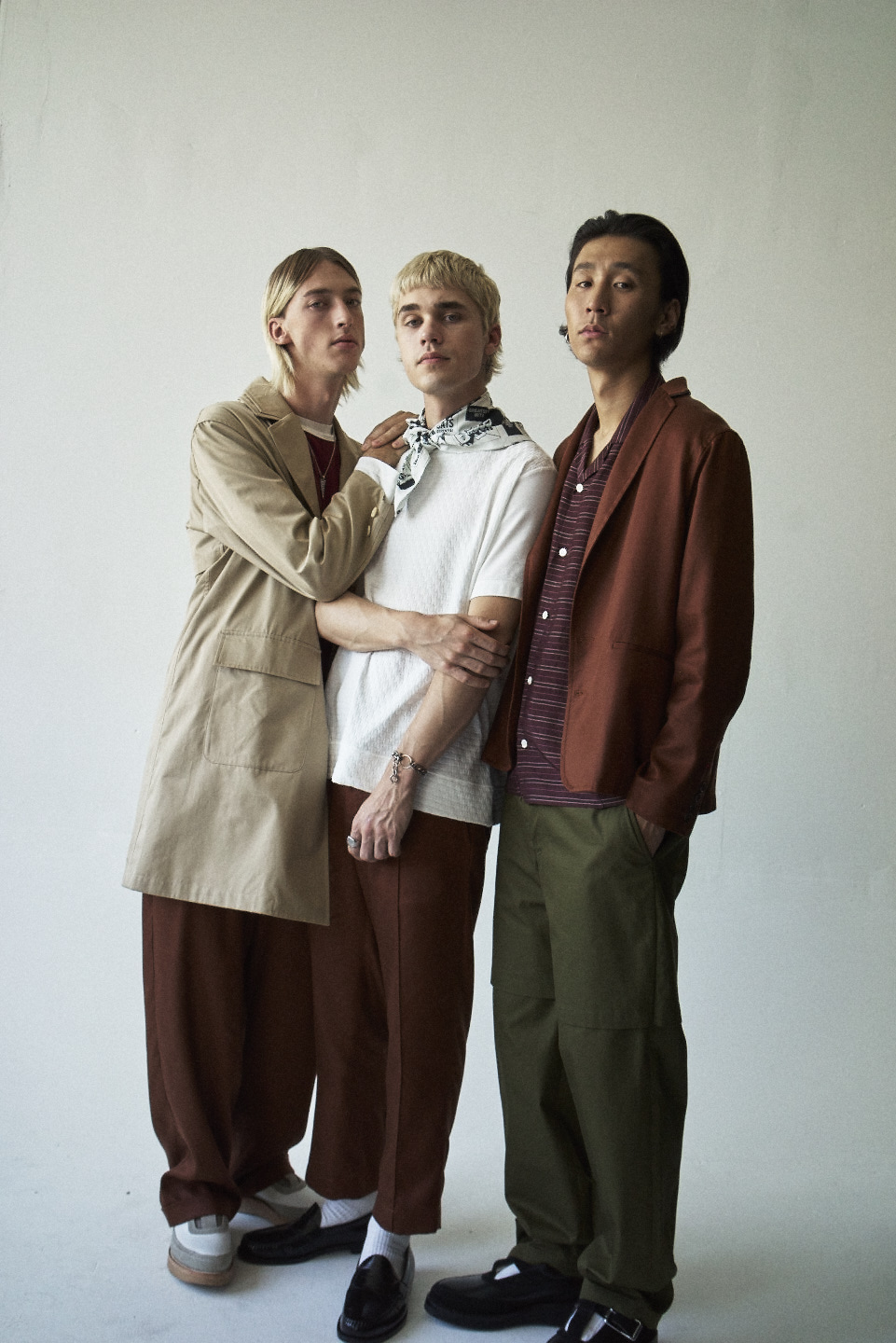
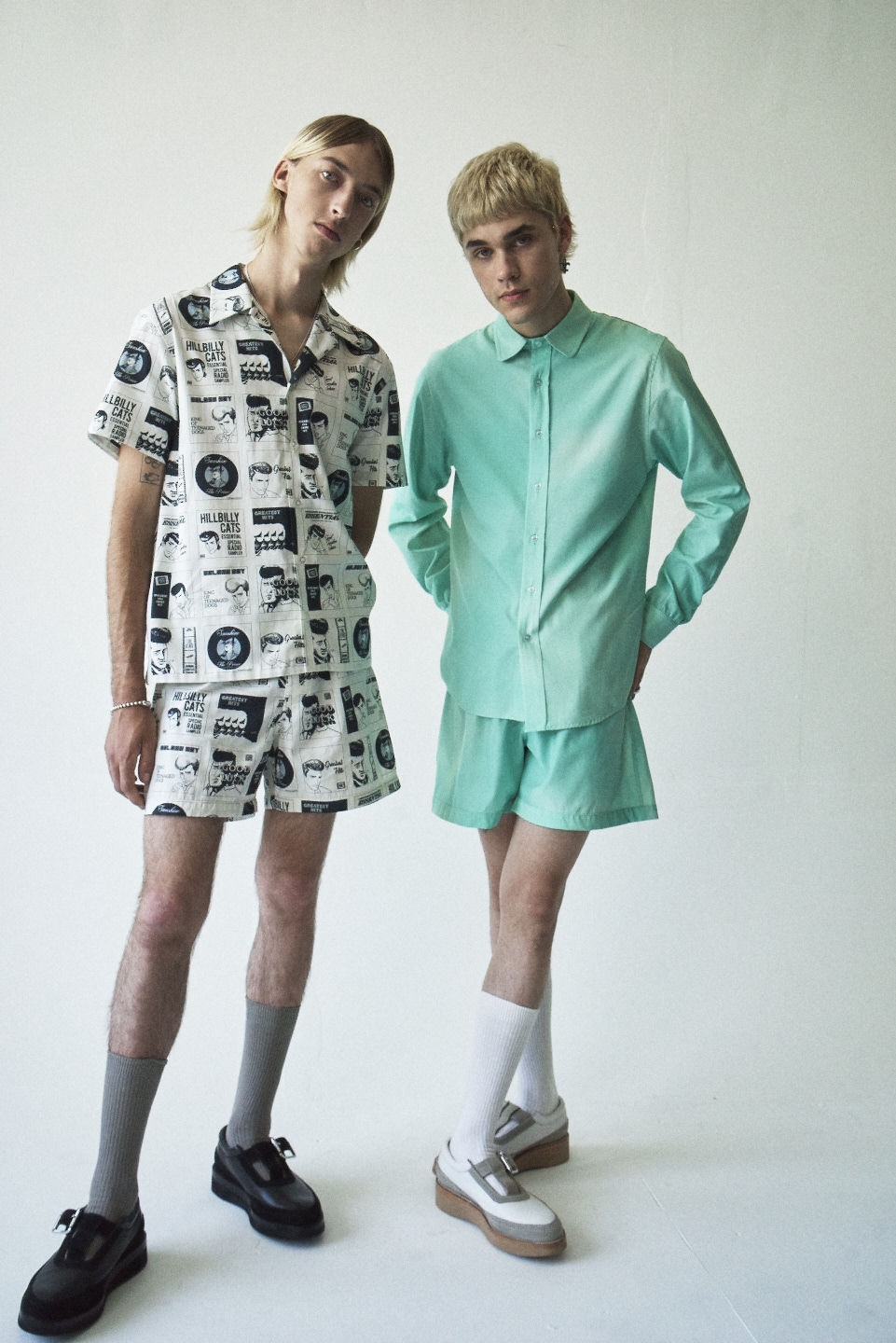
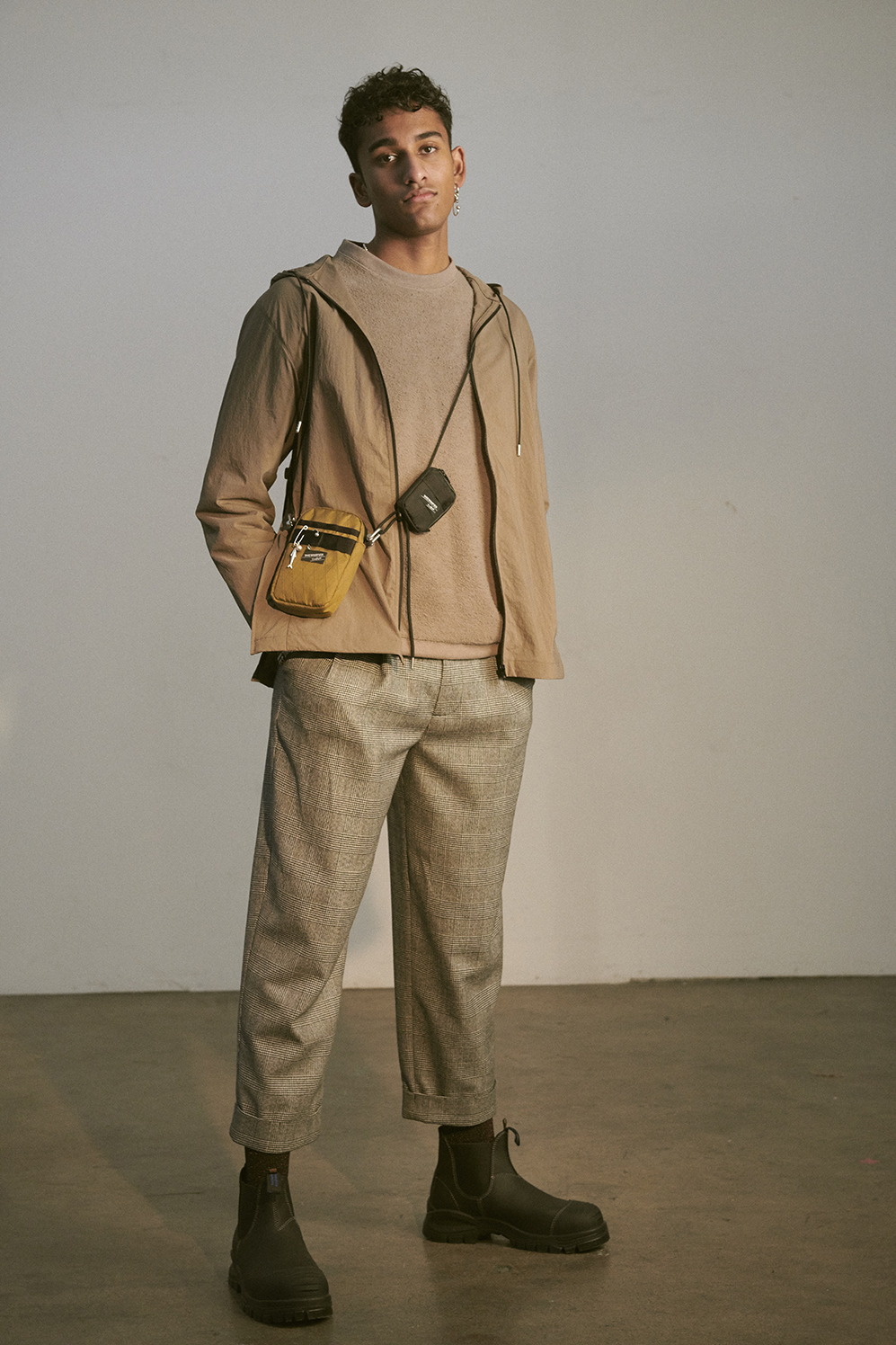
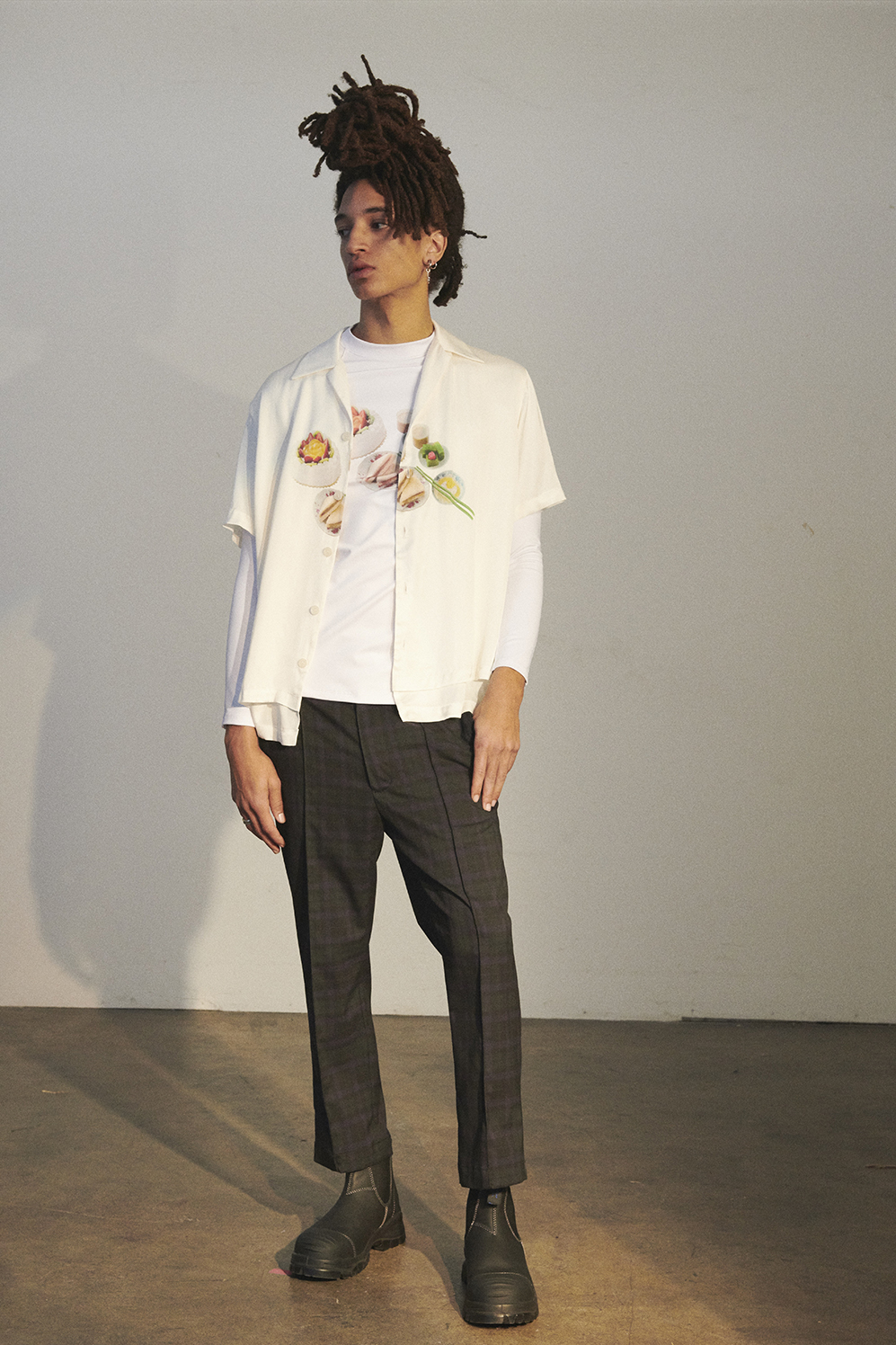
-
What an amazing name! Where did it come from?
CL: It’s basically this idea of less privileged kids with ivy league aspirations, and trying to go somewhere other people say you don’t belong, but trying to prove that you do. But then within that, trying to reach back and figure out who you are. I think everyone has experienced feeling like a fraud in a place, and finally starting to feel at home before asking ‘wait, have I lost a little piece of myself or where I come from?’
-
How does this theme manifest in the collection?
CL: The base of the collection comes from ivy prep inspirations, so we have a lot of classic ’40s and ’50s silhouettes within the designs. But then we played a bit more with the fabrications. For example, there’s this classic knit pullover that we made in Japan. We knitted glitter thread through the fabric to represents the New Orleans flavor kind of messes up the classy ivy prep look.
“We don’t force the narrative on anybody, but neither do we keep it a surprise.”
-
What narrative are you working on next?
CL: At the moment we’re working on our Fall/Winter 2019 collection which will be in stores in early June. It’s based on the idea that in every single city you go to, whether it’s Berlin, Auckland, London, or New York, you will always see one guy in an alley with an apron on, smoking a cigarette. So the season was partially based on this weird international phenomenon of chefs on a break. We really like the idea of this character who you see in every major city, but isn’t from that city and is just toughing it out, working the line, going to culinary school, busting their ass, partying at night, stretching for a dream. We thought this person is probably slightly nostalgic for home but has also integrated into the different culture they’re in now, so the collection again displays this intersection between European and Asian influences.
-
Can you describe how your Asian heritages have inspired your garments?
CL: We have printed a typical Southeast Asian high tea spread on a T-shirt (which we called our Party Print) with kaya toast, a classic South-Asian dish as the focal point. There’s also a Vietnamese dessert hidden in the corner, which is a bit of a cheeky personal signature from Calvin’s heritage to see who’s paying attention, and to demonstrate how Southeast Asian cultures have a way of mixing. It looks like the most ridiculous thing, like it’s been taken out of a takeaway restaurant menu or something like that. We did it as a kind of a joke, but pretty much every single store picked it up. We also made a T-Shirt that features a repurposed cocktail ad from the ’50s that we did with an old style heat-transfer print. The whole idea is that underneath his chef’s coat, this guy, our character, is wearing an old, weird cocktail T-shirt that he got from his dad long ago. The whole idea is that he has so many emotions that he’s sorting through right now, but he only has one suitcase.
Behind the scenes with Goodfight
-
Are any of these narratives based on your team’s own personal memories rather than that of an imaginary character?
CL: Totally. One of the custom prints we did was a jade print, which was actually inspired by this jade bracelet that Julia, our Creative Director, wears all the time. In Taiwanese culture, a jade bracelet is literally like the Ollivanders’ wand of jewelry. The idea is that you don’t pick the bracelet, the bracelet picks you.
-
Is it important to you that customers understand all of these multilayered narratives and references?
CL: That’s something we’ve been wrestling with. How much of the story do we tell, and how much do we let people discover for themselves? I think as a brand we have to make products that are strong enough for the consumer to like without knowing the story behind them. For example, one of our most popular items, the Venus Bowler, is a sukajan shirt with two venus fly traps embroidered on the chest. The idea behind that shirt was that while venus fly traps are deadly, they’re actually also super fragile plants. So we wanted to make a statement about the paradox between strength and weakness, deadliness, and fragility. Now ninety percent of people who wear that shirt will have no idea that was why we picked that flower. But for the people that dig deeper, I think they will discover something special.
CC: We don’t force the narrative on anybody, but neither do we keep it a surprise. We’re quite intentional in telling our partners what we’re trying to do and what the narrative is. Then also, every season we have Good Life, which is an online interview series that highlights a little about the season, the important people in our lives and artistic network.
-
Are you also concerned with reflecting issues that are closer to home for you as residents of today’s America? For example, are you interested in using fashion as a platform to explore the issues that face U.S. politics?
CC: We’re still wrestling with whether we want to make clothes that state “we’re with her” or something. I don’t think we’re that type of brand. But I think [we are political] in the functioning of our company, where we say that we will continue to pay fair wages and to fight to work with factories that have good working conditions. I think [these motivations are] unfortunately polar opposite to some of our leadership right now. At the most recent congressional election there’s been such a response of young, exciting voices in our ranks, and I think it is a sign of the times. A sign of people saying we care, we are here to stay, we are going to lean in and engage. I think we want to do that as a brand as well.
Goodfight is a fashion brand based in Los Angeles that was founded by Caleb Lin, Christina Chou, Julia Chu, and Calvin Nguyen. Their FW19 collection is set to be in stores in early June, and for the first time will be available to buy in London at Dover Street Market, and Galeries Lafayette’s new Champ-Elysee flagship in Paris. Follow their progress on Instagram, or on their website, where you can also check out Good Life, a series of interviews with the people in their artistic network. Click here to read more stories from Los Angeles on FvF, or if you’ve got a passion for fashion, why not read our interview with Japanese sneakerhead Tetsuya Shono, who aims to redefine the American streetwear aesthetic.
Text: Emily May
Photography: Ellen Fedors
